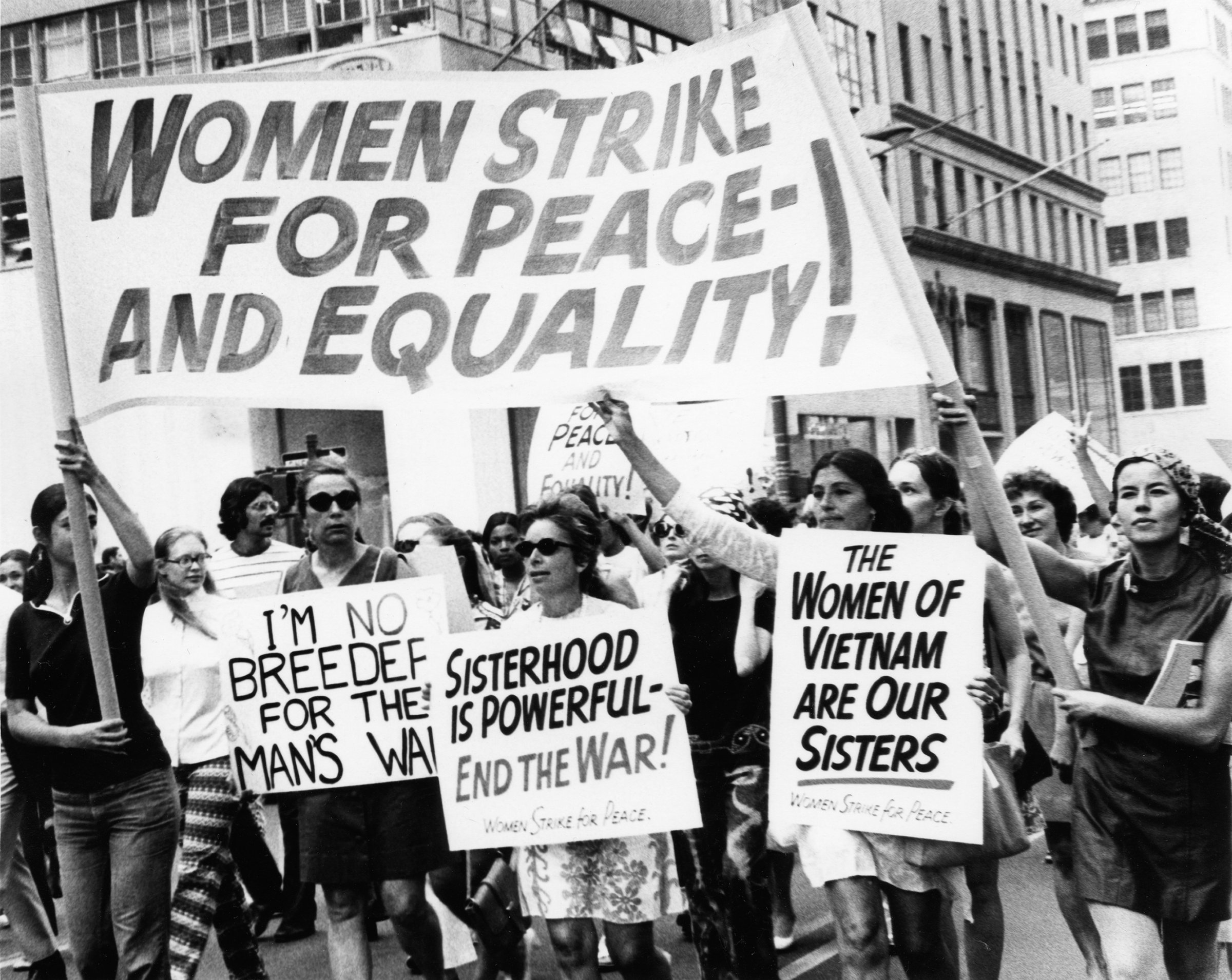
On International Women’s Day this year, the organizers behind the Women’s March on Washington are aiming for another national demonstration of solidarity — this time in the form of “a day without a woman.”
Organizers have called on women to take the day off from paid and unpaid work on March 8, avoid shopping and wear red to show support. Those who participate will follow the precedent set by generations of women who previously spent a day — or weeks — on strike for various causes.
Here are some of the issues that have previously led women in the U.S. to strike — and what they accomplished by doing so:
Uprising of the 20,000 in 1909
In what became known as the “Uprising of the 20,000,” New York City garment workers led a weeks-long strike beginning in November of 1909, calling for better working conditions and higher wages. The strike, led mostly by young women, came out of a meeting of workers from different garment companies. Male union leaders were hesitant because they “did not believe that women could be trusted with a strike,” as framed by the Harvard library’s special collection on women at work, but one young female union member, Clara Lemlich, stood up and demanded a strike among workers across the industry.
What followed was “the largest strike by women to date in American history,” according to the Jewish Women’s Archive, which estimated that 70% of those striking were women. Some wealthy progressive women threw their support behind the strike, absorbing its concerns into the broader fight for suffrage and women’s rights.
The strike — which demanded a 20% pay raise, a 52-hour workweek and overtime pay, according to the AFL-CIO — achieved some gains in the way of higher pay and shorter hours. But a devastating fire at the Triangle Shirtwaist Factory in 1911 soon proved that more safety improvements were necessary.
Women Strike for Peace in 1961
Concerned by the nuclear arms race of the Cold War, an estimated 50,000 women in cities across the country and around the world went on strike to protest nuclear testing on Nov. 1, 1961.
Women “walked out of their kitchens and off their jobs in a one-day women’s strike for peace,” wrote Amy Swerdlow, author of Women Strike for Peace: Traditional Motherhood and Radical Politics in the 1960s. Swerdlow, who was a founding member of Women Strike for Peace (WSP), said activists urged other women to “suspend their regular routine of home, family, and job” and march on government offices to demonstrate their concern.
“The girls are only beginning to feel their power,” WSP founder Dagmar Wilson said at the time, according to the New York Times.
Organizers of the strike received a letter of support from First Lady Jacqueline Kennedy, as well as the wife of Soviet Prime Minister Nikita Khrushchev. “As mothers, we cannot help but be concerned about the health and welfare of our husbands and children,” Kennedy wrote, according to the Times.
The march also earned the attention of President John F. Kennedy, who called the women “extremely earnest.” When he signed the nuclear test ban treaty in 1963, it was, in part, a credit to their protest.
Women’s Strike for Equality in 1970
On Aug. 26, 1970, the Women’s Strike for Equality brought an estimated 50,000 women onto New York City’s Fifth Avenue during rush hour.
Sponsored by the National Organization for Women and organized largely by Betty Friedan, the march put forth a feminist agenda that included access to free abortion, round-the-clock childcare centers and equal opportunities in work and education. Organized around the slogan, “Don’t iron while the strike is hot,” the march was originally intended to result in a national work stoppage among women, as Friedan aimed to demonstrate the unequal burden of domestic labor.
“No one knows how many shirts lay wrinkling in laundry baskets last week as thousands of women across the country turned out for the first big demonstration of the Women‘s Liberation movement,” TIME wrote in its Sept. 7, 1970 issue. “The strike, on the 50th anniversary of the proclamation of the women‘s suffrage amendment, drew small crowds by antiwar or civil rights standards, yet was easily the largest women‘s rights rally since the suffrage protests.”
The strike — which took place at the end of the working day in an effort to boost participation — “made the women’s movement a household word,” Ruth Rosen, author of The World Split Open: How the Modern Women’s Movement Changed America, told the New York Times in 2006. As TIME noted in 1970, the march “won new support and undoubtedly new awareness among both men and women of the case for female rights.”
While the strike’s symbolic impact was clear, the women’s movement continued to push its agenda with varied results. The 1972 passage of Title IX and workplace policies banning sexual harassment were steps toward equal opportunities in work and education for women. Abortion rights advocates made strides when Roe v. Wade legalized abortion in 1973, but the issue is still hotly contested today. And affordable childcare remains a goal among women’s rights activists.
But Friedan viewed the strike as a success. “It exceeded my wildest dreams,” she said at the time. “It’s now a political movement; the message is clear. The politicians are taking heed already.”
More Must-Reads from TIME
- Donald Trump Is TIME's 2024 Person of the Year
- Why We Chose Trump as Person of the Year
- Is Intermittent Fasting Good or Bad for You?
- The 100 Must-Read Books of 2024
- The 20 Best Christmas TV Episodes
- Column: If Optimism Feels Ridiculous Now, Try Hope
- The Future of Climate Action Is Trade Policy
- Merle Bombardieri Is Helping People Make the Baby Decision
Write to Katie Reilly at Katie.Reilly@time.com